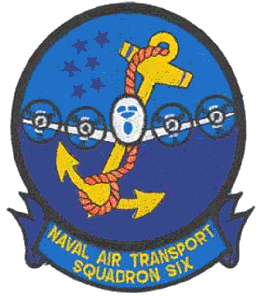The squadron continued its role as Naval Logistics Support until 1948 when it was reassigned to the emerging Military Air Transport Service (MATS) at which time it joined it's sister squadrons VR-3 and 8 in "Operation Vittles" for the air lift of supplies and commodities into Russian isolated East Berlin. During the 8 plus months in Germany, they flew a total of 49,990 hours and carried 229,989 tons of cargo into the city of Berlin. They established a record for payload efficiency and aircraft utilization at better than 10 flight hours per day per aircraft for the entire period. It is interesting to note that either VR-6 or VR-8 was the top ranked squadron each month (Navy, Air Force or Allied) every single month of the operation.
In Dec. 1949, following lifting of the Russian blockade, the squadron was moved back from Rhein Main to Westover AFB, Massachusetts. In 1955 it further relocated to McGuire AFB New Jersey, under the Naval Air Transport Wing Atlantic MATS. Its normal traffic route was across the North Atlantic and carried it to many exotic stops from England to Europe while operating the R6D Liftmaster; carrying thousands of passengers and tons of cargo. During one such flight the squadron suffered its first loss of life when one of their aircraft carrying 60 passengers and 9 crew members disappeared over the Atlantic. A search lasting 14 days revealed only debris from the aircraft. The squadron incurred another fatal accident in 1953 when a flight crashed on take-off taking the lives of the 4 man training crew.
The squadron continued its missions within MATS until March of 1963, when it was silently disestablished.

